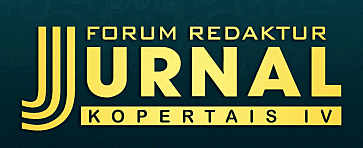Tradisi Nikah Payung Sekaki (Studi Living Hadits di Desa Muara Madras Kecamatan Jangkat, Jambi)
Abstract
Abstract Jambi Malays have diverse traditions, such as the Payung Sekaki marriage tradition in the village of Muara Madas, Jambi. The purpose of this research is to find out the hadith foundation behind the Payung Sekaki marriage tradition. As for data collection techniques using observation, interviews, and documentation. The data analysis process in this study uses Peter L. Berger's sociology of knowledge theory. The results of this study indicate that the practice of the Payung Sekaki marriage tradition in the village of Muara Madras is the practice of the Hadith helping each other which originates from the traditional motto "tudung manudung bak daun sihei" which means helping each other, the strong help the weak and the weak are assisted by the strong. In Peter L. Berger's theory of the sociology of knowledge, the Payung Sekaki marriage tradition has three processes, namely; (a) Externalization which is the understanding of religious leaders about the Hadith of mutual help which is then applied in the Payung Sekaki marriage tradition. (b) Objectification, namely the response of the Muara Madras village community regarding the Payung Sekaki marriage tradition. (c) Internalization, namely when individuals internalize the rules of marriage and social guidelines around the marriage so that it becomes part of their personal beliefs, values and behavior. Keywords: Living Hadith, Marriage, Payung Sekaki Abstrak Melayu Jambi memiliki tradisi yang beranekaragam, seperti dalam tradisi Nikah Payung Sekaki yang berada di desa Muara Madas, Jambi. Tujuan penelitian ini adalah untuk mengetahui landasan hadis yang melatarbelakangi tradisi Nikah Payung Sekaki. Adapun teknik pengumpulan data menggunakan metode observasi, wawancara, dan dokumentasi. Proses analisis data dalam penelitian ini menggunakan teori sosiologi pengetahuan Peter L. Berger. Hasil dari penelitian ini menunjukkan bahwa praktik tradisi nikah Payung Sekaki di desa Muara Madras merupakan pengamalan Hadis saling tolong menolong yang berasal dari semboyan adat "tudung manudung bak daun sihei" yaitu saling bantu membantu, yang kuat membantu yang lemah yang lemah terbantu oleh yang kuat. Dalam teori sosiologi pengetahuan Peter L. Berger, tradisi nikah Payung Sekaki memiliki tiga proses yaitu; (a) Eksternalisasi yang merupakan pemahaman tokoh agama tentang Hadis tolong menolong yang kemudian diaplikasikan dalam tradisi nikah Payung Sekaki. (b) Objektivikasi, yakni respon masyarakat desa Muara Madras terkait tradisi nikah Payung Sekaki. (c) Internalisasi, yaitu ketika individu menginternalisasi aturan-aturan pernikahan dan panduan-panduan sosial seputar pernikahan tersebut sehingga menjadi bagian dari keyakinan, nilai, dan perilaku mereka secara pribadi. Kata Kunci: Living Hadis, Pernikahan, Payung SekakiReferences
Awwaliyah, Neny Muthiatul. “Tradisi Menjaga Kesucian Pakaian Shalat: Etos Keagamaan Dalam Kultur Living Hadis.†FiTUA: Jurnal Studi Islam 2, no. 2 (2021): 1–12. https://doi.org/10.47625/fitua.v2i2.289.
Berger, Peter L. Langit Suci: Agama Sebagai Realitas Sosial. Jakartra: LP3FS, 1991.
Huda, Mahmud, and Muhamad Adelan. “Konsep Nikah Massal Dalam Hukum Islam.†Jurnal Hukum Keluarga Islam 5, no. 1 (2020): 17–33.
Luckman, Peter L. Berger and Thomas. Tafsir Sosial Atas Kenyataan: Risalah Tentang Sosiologi Pengetahuan (Diterjemahkan Dari Buku Asli The Social Construction of Reality Oleh Hasan Basri). Jakarta: LP3ES, 2018.
Mansur, M. Metode Penelitian Living Qur’an Dan Hadis. 1st ed. Yogyakarta: T-H Press , 2007.
Mubarik, Syahidil. “Wawancara Agusdar Hamid.†desa Muara Madras kecamatan Jangkat, Jambi, 9 November 2021, n.d.
———. “Wawancara Badrul Amin.†desa Muara Madras kecamatan Jangkat, Jambi, 23 Mei 2021, n.d.
———. “Wawancara M. Busro.†desa Muara Madras kecamatan Jangkat, Jambi, 30 Mei 2021, n.d.
———. “Wawancara Safar ’Ali.†desa Muara Madras kecamatan Jangkat, Jambi, 26 Mei 2021, n.d.
Mukhtar Latif, Juarta, Elviana. Adat Bersendi Syara Syara Bersendi Kitabullah (Syara Mengato Adat Memakai). Edited by Much Rinaldy. 1st ed. Jambi: Salim Media Indonesia, 2019.
NZ, Adriansyah, Beko Hendro, and Mu’min. “Tradisi Jajuluk (Pemberian Nama) Dalam Pernikahan Adat (Studi Living Hadis Pada Suku Komering Di Kota Palembang).†Diroyah: Jurnal Studi Ilmu Hadis 6, no. 2 (2022): 95–101.
Qudsy, Saifuddin Zuhri. “Living Hadis: Genealogi, Konsep Dan Aplikasi.†Jurnal Living Hadis 1, no. 1 (2016): 177–96.
Rafiq, Ahmad. “Sejarah Al-Qur’an: Dari Pewahyuan Ke Resepsi (Sebuah Pencarian Awal Metodologis).†Yogyakarta: Suka Press, 2012.
Salimudin. “‘Merariq Syar’i’ Di Lombok: Studi Living Hadis Di Dusun Lendang Simbe.†ESENSIA: Jurnal Ilmu-Ilmu Ushuluddin 15, no. 1 (2014): 113–31. https://doi.org/10.14421/esensia.v15i1.766.
Zuhri, Saifuddin, and Subkhani Kusuma Dewi. “Living Hadis; Praktik, Resepsi, Teks, Dan Transmisi.†Yogyakarta, 2018, 1–158.
Copyright (c) 2023 Syahidil Mubarik Mh

This work is licensed under a Creative Commons Attribution-ShareAlike 4.0 International License.
Authors who publish with this journal agree to the following terms:
- Authors retain copyright and grant the journal right of first publication with the work simultaneously licensed under a Creative Commons Attribution-ShareAlike that allows others to share the work with an acknowledgement of the work's authorship and initial publication in this journal.
- Authors are able to enter into separate, additional contractual arrangements for the non-exclusive distribution of the journal's published version of the work (e.g., post it to an institutional repository or publish it in a book), with an acknowledgement of its initial publication in this journal.
- Authors are permitted and encouraged to post their work online (e.g., in institutional repositories or on their website) prior to and during the submission process, as it can lead to productive exchanges, as well as earlier and greater citation of published work (See The Effect of Open Access).






















